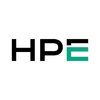


i
NTT DATA, Inc.
Filter interviews by
NTT DATA, Inc. Technical Support Engineer Interview Questions and Answers
Be the first one to contribute and help others!
Interview questions from similar companies

I applied via Walk-in and was interviewed before Nov 2020. There were 5 interview rounds.
Interview Questionnaire
1 Question
- Q1. All basic questions related to CCNA, What is ip address, DHCP ,TCP IP and so on.
Interview Preparation Tips

I applied via Approached by Company and was interviewed before Mar 2021. There were 2 interview rounds.

(3 Questions)
- Q1. Explain LSA Types in detail
- Ans.
LSA Types are used in OSPF to describe the type of information contained in the LSA.
Type 1: Router LSA - contains information about the router and its directly connected networks
Type 2: Network LSA - describes the networks connected to a multi-access network
Type 3: Summary LSA - contains information about networks outside of the area
Type 4: ASBR Summary LSA - describes the ASBR router to the rest of the OSPF domain
Type...
- Q2. Static/ Default Routes
- Q3. BGP Attributes in detail
- Ans.
BGP attributes are used to determine the best path for routing traffic between autonomous systems.
BGP attributes include: AS Path, Next Hop, Local Preference, Weight, Multi-Exit Discriminator (MED), Origin, and Community
AS Path is a list of autonomous systems that the route has passed through
Next Hop is the IP address of the next router in the path
Local Preference is used to indicate the preferred path for outbound tra...
Interview Preparation Tips
- Bgp
- OSPF
- MPLS
- Static Routing
Skills evaluated in this interview

Interview Questionnaire
2 Questions
- Q1. What is DNS,DHCP,IP address,RJ-45?
- Ans.
DNS is a system that translates domain names into IP addresses. DHCP is a protocol for assigning IP addresses. IP address is a unique identifier for devices. RJ-45 is a type of connector used for Ethernet cables.
DNS translates domain names (e.g., www.example.com) into IP addresses (e.g., 192.168.1.1).
DHCP is a protocol that automatically assigns IP addresses to devices on a network.
An IP address is a numerical label as...
- Q2. What you should see in the show interface type/member/module/number?
- Ans.
The show interface command displays the status and statistics of a network interface.
Displays the interface type, member, module, and number
Shows the current status of the interface (up or down)
Displays the number of packets transmitted and received
Shows the number of errors and discards
Displays the speed and duplex settings of the interface
Skills evaluated in this interview

I appeared for an interview before Jul 2016.
Interview Questionnaire
2 Questions
- Q1. Related to networking
- Q2. Basic question about my self
Interview Preparation Tips
Experience: Very difficult this round but awesome
Tips: Basic knowledge our job related questions
Round: HR Interview
Experience: Very difficult this round but awesome
Tips: Basic knowledge our job related questions
Skills: Network Protocols

I appeared for an interview in Mar 2017.
Interview Questionnaire
2 Questions
- Q1. Tell me about your self
- Ans.
I am a dedicated and experienced network engineer with a strong background in designing, implementing, and maintaining network infrastructure.
Over 5 years of experience in network engineering
Proficient in configuring and troubleshooting network devices such as routers, switches, and firewalls
Skilled in network design and implementation, including VLANs, VPNs, and routing protocols
Certified in Cisco CCNA and CCNP
Strong
- Q2. Asked me some technical questions
Interview Preparation Tips
Experience: It was selected on forwarding by one of my friends which work in Accenture
Tips: NR
Round: HR Interview
Experience: I told them about all my activity which I perform in day to day life.
Round: Technical Interview
Experience: Told him whatever I knew as per technical aspects
Skills: Networking Basics

I appeared for an interview in Jun 2017.
Interview Questionnaire
1 Question
- Q1. They asked about routing protocol like rip,eigrp,ospf..
Interview Preparation Tips
Experience: I explained everything
Tips: Be confident
Round: Group Discussion
Experience: I explained successfully
Tips: Be confident
Duration: 15 minutes
Skills: Technical Skills

I applied via Walk-in and was interviewed before Apr 2021. There were 3 interview rounds.

General knowledge
(1 Question)
- Q1. Working experience & skills
Interview Preparation Tips

Interview Questionnaire
5 Questions
- Q1. What is VLAN ?
- Ans.
VLAN stands for Virtual Local Area Network. It is a logical grouping of devices on a network based on function, department or application.
VLANs allow for better network management and security by separating traffic into different broadcast domains.
Devices in different VLANs cannot communicate with each other without a router or layer 3 switch.
VLANs can be configured based on port, MAC address or protocol.
Example: VLAN ...
- Q2. What is BGP ?
- Ans.
BGP stands for Border Gateway Protocol. It is a routing protocol used to exchange routing information between different networks.
BGP is used in large-scale networks such as the internet.
It is a path-vector protocol that selects the best path for data to travel between networks.
BGP uses TCP port 179 for communication.
It is used to connect different autonomous systems (AS) together.
BGP is used to prevent routing loops an...
- Q3. What will be the subnet mask for CIDR /29
- Ans.
The subnet mask for CIDR /29 is 255.255.255.248.
CIDR /29 means 29 bits are used for the network portion and 3 bits for the host portion.
To calculate the subnet mask, convert the 29 network bits to 1s and add 3 0s for the host bits.
The result is 255.255.255.248 in dotted decimal notation.
- Q4. What is NAT & PAT ?
- Q5. What is Ospf ?
- Ans.
OSPF (Open Shortest Path First) is a routing protocol used to determine the best path for data to travel in a network.
OSPF is a link-state protocol that uses Dijkstra's algorithm to calculate the shortest path between two points.
It is used in large enterprise networks and is designed to scale well.
OSPF routers exchange information about their connected networks and use this information to build a topology map of the ne...
Skills evaluated in this interview

I applied via Company Website and was interviewed in Dec 2020. There was 1 interview round.
Interview Questionnaire
6 Questions
- Q1. Difference between access and trunk
- Ans.
Access is a port that allows a single VLAN while trunk is a port that allows multiple VLANs.
Access ports are used to connect end devices like computers, printers, etc. to the network.
Trunk ports are used to connect switches to each other and carry traffic for multiple VLANs.
Access ports are assigned to a single VLAN while trunk ports can carry traffic for multiple VLANs.
Access ports do not tag frames while trunk ports ...
- Q2. Difference between lan and wan
- Ans.
LAN is a local area network that connects devices within a limited area, while WAN is a wide area network that connects devices over a large geographical area.
LAN is typically used in homes, offices, or schools, while WAN is used to connect different LANs across cities, countries, or even continents.
LAN has a higher data transfer rate and lower latency compared to WAN.
Examples of LAN technologies include Ethernet, Wi-F...
- Q3. How would we convert access into trunk
- Ans.
To convert access into trunk, we need to configure the switch port as a trunk port.
Configure the switch port as a trunk port using the 'switchport mode trunk' command.
Verify the trunk configuration using the 'show interfaces trunk' command.
Ensure that the VLANs allowed on the trunk are configured using the 'switchport trunk allowed vlan' command.
Ensure that the native VLAN is configured using the 'switchport trunk nati
- Q4. How load balancer works
- Ans.
Load balancer distributes incoming network traffic across multiple servers to improve performance and availability.
Load balancer acts as a reverse proxy server
It distributes traffic based on various algorithms such as round-robin, least connections, IP hash, etc.
It monitors server health and redirects traffic to healthy servers
It can be hardware-based or software-based
Examples of load balancers include F5, HAProxy, Ngi
- Q5. Where we could use trunk and where we can use access
- Ans.
Trunk is used to carry multiple VLANs between switches, while access is used to connect end devices to the network.
Trunk is used to connect switches together and carry multiple VLANs
Access is used to connect end devices like computers, printers, etc. to the network
Trunk ports are configured with VLAN tagging, while access ports are not
Examples of trunk ports are inter-switch links, while examples of access ports are po
- Q6. What we can do in security as port wise
- Ans.
Port-based security involves controlling access to network resources based on the physical port of the device.
Port security can be implemented by limiting the number of MAC addresses that can be learned on a port.
It can also involve configuring the port to only allow traffic from specific VLANs.
Port security can be used to prevent unauthorized access to the network by limiting the devices that can connect to it.
It can ...
Interview Preparation Tips
Skills evaluated in this interview


(1 Question)
- Q1. General discussion
(2 Questions)
- Q1. Questions related to networking
- Q2. Routers switch configuration and commands
- Ans.
Routers switch configuration and commands involve setting up and managing network devices for efficient data routing.
Routers use commands like 'show ip route' to display routing table information
Configuration involves setting up IP addresses, subnet masks, and default gateways
Commands like 'show interfaces' can display interface status and configuration details
Skills evaluated in this interview
NTT DATA, Inc. Interview FAQs
Tell us how to improve this page.
NTT DATA, Inc. Interviews By Designations
- NTT DATA, Inc. Senior Associate Interview Questions
- NTT DATA, Inc. Software Development Senior Analyst Interview Questions
- NTT DATA, Inc. Testing Engineering Specialist Interview Questions
- NTT DATA, Inc. Senior System Integration Specialist Interview Questions
- NTT DATA, Inc. System Integration Specialist Interview Questions
- NTT DATA, Inc. Software Development Specialist Interview Questions
- NTT DATA, Inc. Software Developer Interview Questions
- NTT DATA, Inc. HC & Insurance OPS Associate Interview Questions
- Show more
Interview Questions for Popular Designations
- Technical Support Executive Interview Questions
- Technical Support Associate Interview Questions
- Senior Technical Support Engineer Interview Questions
- Senior Technical Support Associate Interview Questions
- Technical Support Specialist Interview Questions
- Desktop Support Engineer Interview Questions
- Technical Support Analyst Interview Questions
- IT Technical Support Engineer Interview Questions
- Show more
Technical Support Engineer Interview Questions from Similar Companies
Fast track your campus placements
NTT DATA, Inc. Technical Support Engineer Reviews and Ratings
based on 9 reviews
Rating in categories
|
Senior Associate
470
salaries
| ₹2 L/yr - ₹8 L/yr |
|
Software Development Senior Analyst
414
salaries
| ₹4.5 L/yr - ₹18 L/yr |
|
Software Development Analyst
386
salaries
| ₹3.5 L/yr - ₹11.5 L/yr |
|
Software Development Specialist
298
salaries
| ₹7 L/yr - ₹19.5 L/yr |
|
Senior Software Engineer
296
salaries
| ₹11.1 L/yr - ₹26.8 L/yr |

Accenture

Wipro

Cognizant

Capgemini
- Home >
- Interviews >
- NTT DATA, Inc. Interview Questions >
- NTT DATA, Inc. Technical Support Engineer Interview Questions











